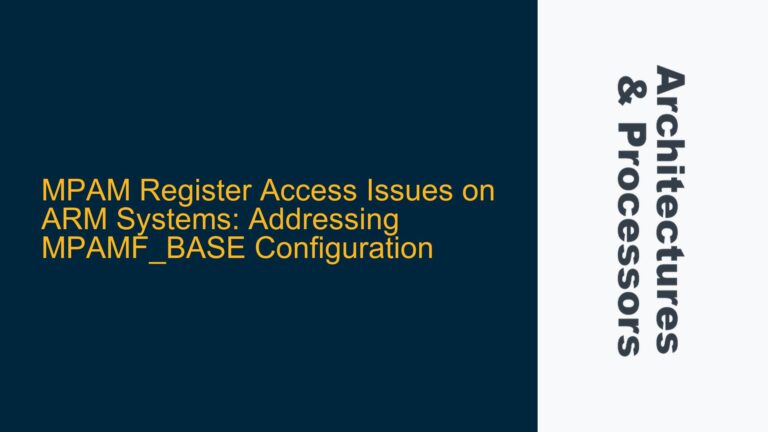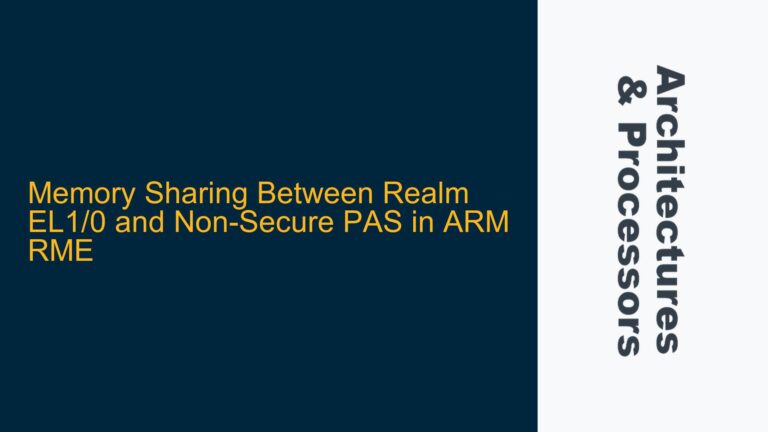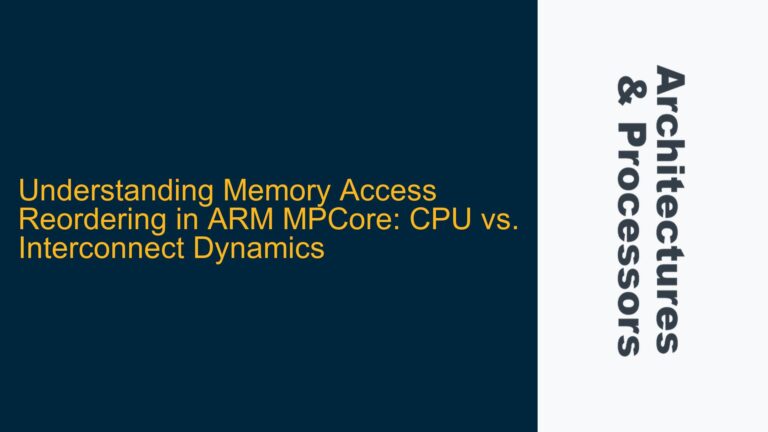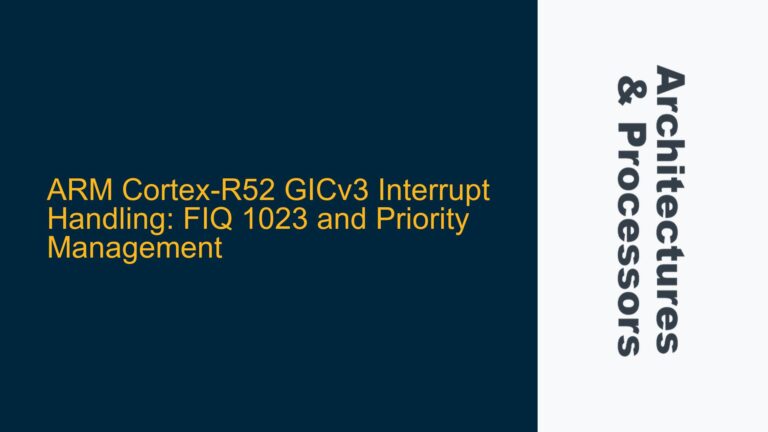ARM Cortex-M0+ Single-Cycle Multiply Implementation and Power Efficiency
The ARM Cortex-M0+ processor is widely recognized for its low power consumption and cost-effectiveness, making it a popular choice for embedded systems in resource-constrained environments. One of its optional features is the single-cycle multiply operation, which can significantly enhance performance in applications requiring frequent arithmetic computations, such as MP3 decoding. However, the implementation details of this feature, including its gate count, power consumption, and architectural trade-offs, are often misunderstood or overlooked. This post delves into the technical intricacies of the single-cycle multiply operation on the Cortex-M0+, its impact on power efficiency, and how to optimize its usage for low-power audio decoding applications.
The single-cycle multiply operation is implemented using a combinational logic multiplier, which allows it to complete in a single clock cycle. This is in contrast to multi-cycle multipliers that require several clock cycles to produce a result. The combinational logic approach is advantageous for performance but comes at the cost of increased gate count, which directly impacts power consumption and silicon area. The gate count for the single-cycle multiply operation is approximately 8000 gates, though this number is not necessarily a power-of-two value, as is often assumed. The exact gate count depends on the specific implementation and optimization techniques used by the silicon vendor.
Understanding the power consumption implications of the single-cycle multiply operation is critical for designing low-power systems. While the operation itself is fast, the additional gates required for its implementation increase static and dynamic power consumption. Static power consumption is influenced by the leakage current of the additional gates, while dynamic power consumption is affected by the switching activity during multiplication operations. For applications like MP3 decoding, where multiplication operations are frequent, the dynamic power consumption can become significant. Therefore, optimizing the usage of the single-cycle multiply operation is essential for achieving the desired balance between performance and power efficiency.
Memory and Instruction Set Considerations for MP3 Decoding on Cortex-M0+
The Cortex-M0+ processor’s Thumb-2 instruction set includes a variety of arithmetic instructions, including the MUL (multiply) and MULH (multiply high) instructions. The MUL instruction performs a 32-bit multiplication and returns the lower 32 bits of the result, while the MULH instruction returns the upper 32 bits of the result. These instructions are particularly useful for fixed-point arithmetic, which is commonly used in audio processing algorithms like MP3 decoding. However, the availability and efficiency of these instructions depend on the specific implementation of the Cortex-M0+ core and the presence of the single-cycle multiply feature.
In systems where the single-cycle multiply feature is not available, multiplication operations may take multiple clock cycles, significantly impacting performance. For example, a 32-bit multiplication on a Cortex-M0+ without the single-cycle multiply feature can take up to 32 clock cycles, depending on the implementation. This can be a bottleneck for real-time audio decoding, where timely processing of audio frames is critical. Therefore, selecting a Cortex-M0+ variant with the single-cycle multiply feature is highly recommended for such applications.
Another consideration is the memory architecture of the Cortex-M0+ processor. The processor features a von Neumann architecture, where instructions and data share the same memory bus. This can lead to contention and potential bottlenecks when accessing memory for both instructions and data simultaneously. In MP3 decoding, where large amounts of data need to be processed and stored, optimizing memory access patterns is crucial for maintaining performance. Techniques such as data prefetching, loop unrolling, and efficient use of the processor’s register file can help mitigate memory access bottlenecks and improve overall system performance.
Strategies for Optimizing MP3 Decoding on Cortex-M0+ with Single-Cycle Multiply
To achieve optimal performance and power efficiency for MP3 decoding on the Cortex-M0+ processor, several strategies can be employed. First, leveraging the single-cycle multiply feature is essential for reducing the computational overhead of multiplication operations. This can be achieved by ensuring that the Cortex-M0+ variant selected for the application supports this feature. Additionally, optimizing the use of the Thumb-2 instruction set, particularly the MUL and MULH instructions, can further enhance performance.
Second, minimizing power consumption requires careful management of the processor’s operating frequency and voltage. While higher clock frequencies can improve performance, they also increase power consumption. Therefore, operating the Cortex-M0+ at the lowest feasible clock frequency that meets the performance requirements of the MP3 decoding algorithm is recommended. Dynamic voltage and frequency scaling (DVFS) techniques can be employed to adjust the processor’s operating frequency and voltage based on the workload, further optimizing power consumption.
Third, efficient memory management is critical for maintaining performance and minimizing power consumption. This includes optimizing data access patterns to reduce memory contention and leveraging the processor’s cache (if available) to minimize access latency. For example, organizing audio data in memory to maximize spatial locality can improve cache hit rates and reduce the number of memory accesses. Additionally, using DMA (Direct Memory Access) for transferring large blocks of data can offload the processor and reduce power consumption by minimizing the number of active clock cycles.
Finally, software optimization techniques such as loop unrolling, inline functions, and efficient use of the processor’s register file can further enhance performance. Loop unrolling reduces the overhead of loop control instructions, while inline functions eliminate the overhead of function calls. Efficient use of the register file minimizes the need for memory accesses, reducing both latency and power consumption. These techniques, combined with the single-cycle multiply feature, can enable the Cortex-M0+ processor to efficiently handle the computational demands of MP3 decoding while maintaining low power consumption.
In conclusion, the ARM Cortex-M0+ processor’s single-cycle multiply feature is a powerful tool for enhancing performance in low-power embedded systems, particularly for applications like MP3 decoding. By understanding the architectural and implementation details of this feature, and employing optimization strategies for both hardware and software, developers can achieve the desired balance between performance and power efficiency. This enables the development of cost-effective, low-power audio decoding solutions for resource-constrained environments, such as mobile products and educational devices for developing nations.






